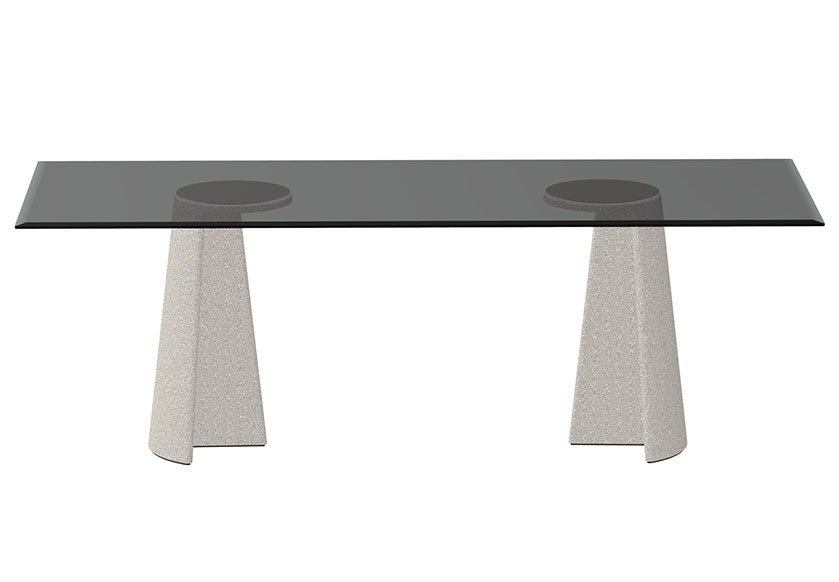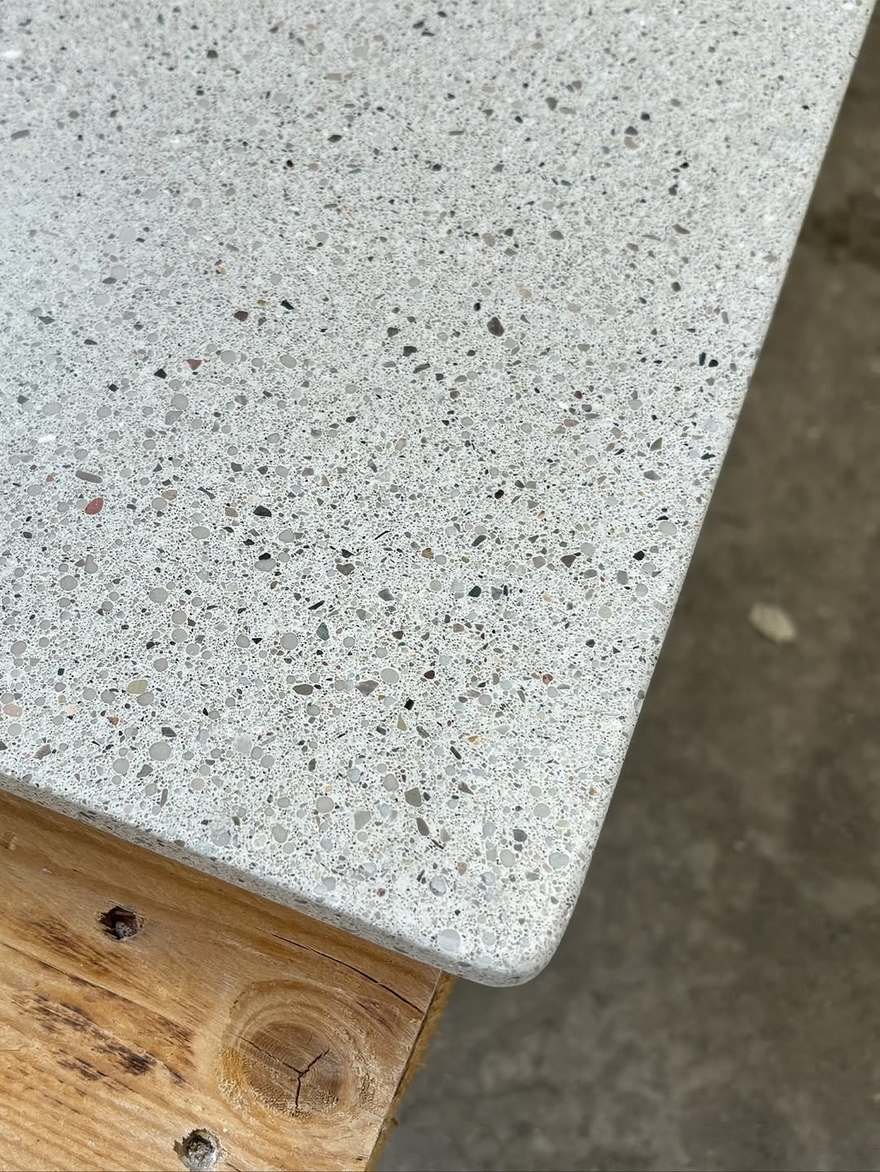
In 2013, John Kindschuh was chatting with another patient in the hospital when his words abruptly slurred. That patient recognized something was wrong and called for help. Doctors were able to intervene.

In 2013, John Kindschuh was chatting with another patient in the hospital when his words abruptly slurred. That patient recognized something was wrong and called for help. Doctors were able to intervene.
I can't remember where I first saw them, but ever since, I have been unable to forget them: abelian sandpiles. I'm far from the only one. They're remarkably simple, yet produce lovely symmetric patterns. I loved them so much that I adorned the title banner of this blog with an animation of an abelian sandpile. But what exactly are abelian sandpiles? How do they work? And how many pretty, mesmerizing pictures can we make with these things?
Let's start with an explanation. An abelian sandpile lives on a grid. On each grid cell there can be any number of grains of sand. But if there are four or more grains of sand on a single cell, then the grains topple over into the four neighbouring cells. Toppling might cause other grid cells to have four or more grains of sand, so they also must topple. This repeats until all cells have three grains of sand or fewer, at which point the abelian sandpile is said to be stable. If a cell topples on the edge of the grid, then a grain "falls off" the edge and only the neighbours of the cell that are in the grid gain a grain of sand. This ensures that toppling always finishes in a final stable sandpile. Try adding grains to the grid below to see how the rules work.
Repeatedly adding grains of sand to the center gives a smaller version of the animation that lives on the top of my blog. If you try this, then it doesn't take long before you start seeing the some grid configurations repeat.
Notice how when there are many neighbouring cells with three grains of sand, adding one more grain of sand causes a cascade of toppling and the final stable pattern is hard to predict. You might wonder how we should handle cases where there are multiple grid cells that need to be toppled. Since toppling one cell affects its neighbours then we need to be careful about the order we topple cells. Or do we?
This brings me neatly to the "Abelian" term. From here on, I will be referring to abelian sandpiles as just sandpiles. In the context of Group Theory, an abelian group is both associative and commutative. In "English", this means that order doesn't matter. This is precisely analogous to addition of numbers. When you are summing a set of numbers, no matter in which order you add them together, you will get the same result.
As it turns out, the same is true of toppling cells in our sandpile, which is part of the reason why it carries the name "Abelian". This might seem like a quirky observation that I can use to simplify my toppling implementation. Which is true. However, it also gives us a connection to a rich field of Mathematics: namely "Abstract Algebra" & "Group Theory". We will use this later to generate a nice pattern, but for now let's simply focus on the fact that the toppling order is irrelevant. I won't be proving that toppling order is irrelevant, but I will at least demonstrate it.
In the sandpile widget above, you can build a sandpile by adding one grain at a time, and toppling is done eagerly as soon as a cell has more than 4 grains of sand. Since I've now claimed that toppling order is irrelevant, we can consider a different way of building a sandpile. We can add all the grains of sand at the beginning, allowing cells to temporarily have 4 grains of sand or more. Then, when we're done, we can topple all the cells that have 4 grains or more. You can try this in the widget below. On the left you can place all the sand you want and on the right you'll see the usual view of what the sandpile looks like when toppling is done eagerly. When you're done adding sand, you can press "Topple" to topple all the sand in a random order. At the end, the left sandpile and the right sandpile will be equal.
No matter when we do the toppling we always get the same result. We can dump as much sand onto the grid as we like and just do all the toppling at the end. This lets us explore another interesting idea. What happens if we add one sandpile to another?
Let's say we have two sandpiles A and B. We can then create a new sandpile A + B by doing the element-wise sum of grid cells and then toppling the sand at the end. You can think of this as dumping all the sand in B onto A and then toppling.
The reason we want to add whole sandpiles directly is because, again, it lets us reach into the mathematical theory of groups. I mentioned earlier that because sandpiles form an abelian group, we add them in any order, but there's more that we can use. All groups must have something analogous to the number zero, where adding zero to a number has no effect. This means there must be a sandpile that when "added" to another sandpile leaves the other sandpile unchanged. This special sandpile has a name: the identity sandpile. You might think that this is just the empty sandpile, with no sand in any grid cell, but this is not the case. This is because the empty sandpile is excluded from the abelian group, by definition. In fact, many sandpiles are excluded from the abelian group because they don't have the right properties.
Let's take a short break to look at some animated sandpiles on different square grids. As you watch sand being added to each grid, can you spot anything that's different about the empty grid compared to other sandpiles encountered? By the time you read this, you might need to reset the grids to see the empty grid. Don't forget to take a moment to appreciate the nice geometric patterns that emerge.
You might notice that some sandpiles repeat and some sandpiles are never seen again. The empty grid is one such sandpiles that never repeats. This makes perfect sense. At every step we are adding sand to the grid. We occasionally lose sand due to it "falling off" the edges of the grid, but we can never lose all the sand on the grid by adding more sand. So once we've added some sand to the grid, we can never get back to the empty grid. We can call the patterns that repeat "recurrent" and the patterns that don't repeat "transient".
It is precisely the recurrent sandpiles that have the nice properties required to make them an abelian group. Since the empty sandpile is transient, it is not included. Therefore, the group rules don't apply to the empty sandpile and the empty sandpile is not allowed to be the special identity sandpile.
But this makes the identity sandpile even more interesting. If it can't be the empty sandpile, then what kind of sandpile could leave a different sandpile unchanged when adding them together. Since it must be a recurrent sandpile, then it must be mostly filled with sand, but how should this sand be arranged?
A proper explanation would go well beyond the scope of this blog post, so let's skip to the conclusion: pretty pictures. Below you can see what the idendity sandpile looks like for different grids, including rectangular ones. It might take a few seconds for larger grids. Mess around and see if you can find something that you like.
The rules of abelian groups guarantee that these identity sandpiles must exist, but they tell us nothing about how beautiful they are. These identity sandpiles are almost fractal like in nature, with their repeating triangular patterns. In fact, they may actually become fractals as the size of the grid tends to infinity, but not much is known about the scaling limits of the identity sandpile at the time of writing. For now, we'll just have to appreciate their beauty in the finite case. Perhaps if you're looking for a pattern to tile a bathroom in the future, think of the humble sandpile.
If you want to learn more about sandpiles, there is also an excellent Numberphile video you can watch.
As we live our lives, we humans steadily pollute the planet. And when we die, we have our final opportunity to concentrate poison into the Earth. And boy do we make the most of it.
Your average casket is made out of wood, which biodegrades. But few funeral planners are opting for unfinished pine boxes. Instead we slather that casket in stains and polyurethane finishes, and fasten the joinery with polyvinyl acetate glue. We fill that casket with shiny synthetic textiles covering a thin foam mattress attached to plywood laminated with formaldehyde glue. We add a foam pillow, also covered in faux silk. Then we attach all of the metal hardware, and we lacquer or topcoat that stuff too.
Then the casket goes into the ground, and spends the next several decades slowly releasing its toxic payload into the soil, polluting any nearby groundwater sources. Outside of industrial sites, cemeteries contain some of the most polluted soils in any given community.
The problem is irreversible, but a Dutch company called Loop Biotech hopes to stop contributing to it. Headed up by architect Bob Hendrikx, who had been working with mycelium since his student days at TU Delft, the company produces mushroom-based coffins.

Their Loop Living Cocoon is grown in just seven days from mushrooms, with the mycelium being combined with upcycled hemp to strengthen the structure.

The coffins can be lined with moss rather than polyurethane foam. Once they go into the ground, the units begin breaking down after 30 to 45 days, and the mycelium releases beneficial nutrients into the soil.



They're also lightweight. Your average wooden coffin weighs around 200 lbs empty, whereas the Living Cocoon tips the scales around 60 lbs.


As for price, they run €1,500 to €2,000 (USD $1,600 to $2,150). Your average softwood coffin goes for less than that, but hardwood coffins can cost far more.

Ronon Bouroullec's sensitive use of concrete makes Brutalism look, well, brutish. His Ancora collection of tables seem impossibly light and airy.

"The collection of tables and low tables owes its name to the section of the base. The curved edge joins the structural element of the rib creating the shape of an anchor (in Italian 'ancora'), a design that balances aesthetics and function."

The tables are available as standalone units, suitable for both indoor and outdoor…




…and as bases for tables topped in either glass, concrete sheets or (boo) MDF with oak veneer.







The Ancora collection is in production by Magis.
